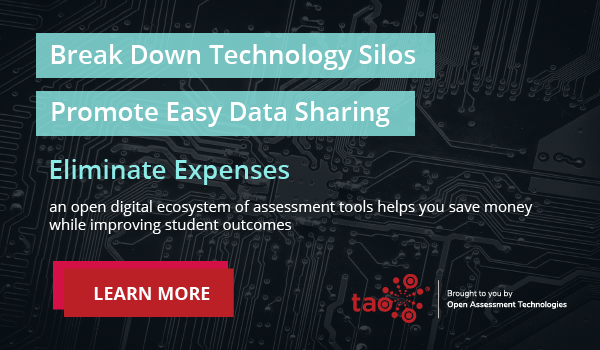It’s no secret that the last year has accelerated the speed at which institutions in higher education are adopting digital transformation. But what does the future of higher education look like in this context? How will new technology challenge traditional teaching and learning models? And what should institutions prioritize in 2021 and 2022?
Enrollment in traditional higher education programs is declining, and many education leaders and analysts agree that the key to future sustainability for institutions lies in personalized learning, data streamlining, and EdTech that drives an engaging student experience.
Recently, we had the pleasure of participating in an interview with industry experts from Microsoft Education, Ellucian and Allitix where we discussed the changing nature of higher education, the sophistication of students’ tech expectations, and how colleges and universities can stay on the cutting edge to compete for enrollment and revenue.
You can read the full article, also featured in USA today, online here. For a shorter recap, we’ve also called out the core points that higher education institutions need to consider when rolling out new technology below:
1. Personalization is the Holy Grail of Education
Educators know that everyone learns differently. And for today’s digitally oriented students, a one-size-fits all, traditional education simply isn’t enough. Personalized learning takes into account an individual’s distinct learning needs and interests to provide a more relevant, authentic and engaging experience, thus leading to better outcomes for students.
With the emergence of classroom technology, like digital assessment, it’s becoming easier for educators to develop and deliver student-centered lessons and authentic, personalized assessments.
“As technology continues to evolve, users expect and deserve “consumer-grade” experiences,” says Mariam Tarig, Senior Vice President at Ellucian. Along these lines, personalization will be more important than ever. Institutions need to provide more than a generic experience, leveraging data to support the individual needs of each student.”
2. Invest in Accessibility
Experts agree that student equity must be at the forefront of institutional decision making in the next few years, especially in regard to investments in new technologies.
Mike Tholfsen. Principal Group Product Manager at Microsoft Education notes that technology accessibility is key here:
“Given the challenges and burdens put on higher education students during the pandemic, the most important area to focus on in the year ahead is inclusive and accessible technology. Content needs to be engaging and inclusive for all learners, including blind/low-vision students, deaf and hard of hearing students, those with dyslexia, and non-native speakers. It is critical for universities to ensure that the students who need the most assistance are able to engage through free and inclusive software tools and that courses be accessible to all.”
3. Interoperability & Data Access is Key
In order to pivot to serve changing student needs – regardless of learning modality – higher education institutions must have flexible, interoperable EdTech solutions in place that plug and play with new applications. This is achieved through open standards. Systems built on open standards allow for seamless integrations and data sharing between other applications to provide a snapshot into the entire student learning process.
“Colleges need to implement “open enterprise architecture” solutions to ensure a fully interoperable ecosystem,” says Marc Oswald, Co-founder and CEO at Open Assessment Technologies. “If faculties continue to choose their own IT tools, data will be locked into countless silos, and the student journey will suffer immensely as a result of that,” he continues.
Oswald goes on to say that it’s crucial that colleges provide clear guidelines and instructions to faculties to ensure whatever tools they select neatly fit into the university-wide system.
Kim Fisher, Higher Education Practice Director at Allitix, echoes the importance Oswald places on interoperability to drive proactivity institution wide.
“An institution’s ability to build a culture of proactivity is key. Building upon the rich dataset in their EdTech solutions, colleges and universities should be looking to connect and capitalize on that data to plan for the future in a way that allows them to quickly pivot in order to serve students in a more proactive manner.”
—
Our Takeaway
It’s clear (not only from this discussion) that the consensus among many education leaders is that the future of higher education will be driven by technology. In this case, an institutions sustainability will hinge on its ability to provide complete EdTech solutions that provide authentic, personalized learning experiences, meet student technology expectations, and streamline data for improved processes and outcomes. Click here to read the full panel of experts article.


